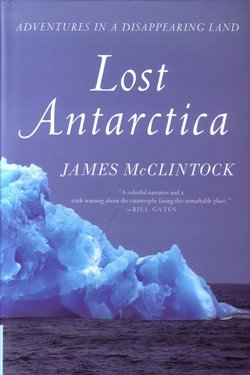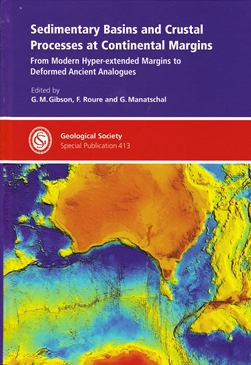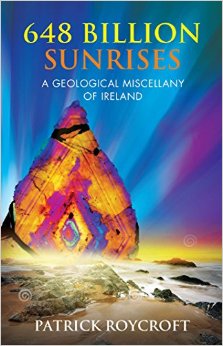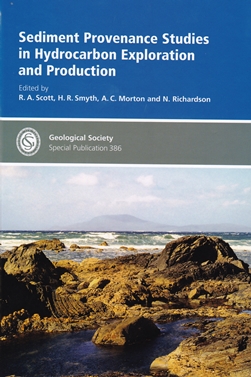 Lost Antarctica - adventures in a disappearing land
Lost Antarctica - adventures in a disappearing land
This book describes some of the changes that have occurred in Antarctica over the last 50 years or so. Written for a popular audience, it is based on research and experiences of the author, his colleagues and collaborators in Antarctic marine chemical ecology and, more recently, studies of the impacts of a rapidly changing climate on marine plants, animals and communities of the Antarctic Peninsula. The author has made 14 research visits to Antarctica – to the Kerguelen Islands, nine consecutive expeditions to McMurdo Sound and latterly to the US Palmer Station and the Antarctic Peninsula.
Descriptions of fieldwork events and the wildlife give a fascinating insight into the life of an Antarctic scientist and will bring back memories for those who have been lucky enough to visit or work in Antarctica. Interspersed with the main message of the book about the effects of climate change on Antarctica, which has notes referencing both journal and popular press articles, they provide an excellent leavening to the science.
Eight chapters cover different aspects starting with a broad introduction to Antarctic research, followed by the importance of ice and how it is being affected. Since the opening of Drake Passage between Antarctica and South America 30-40 million years ago, the Antarctic Circumpolar Current has isolated the continent and played an important role in regulating global climate. However, this has migrated southwards since the 1950s and dramatic increases in temperature, particularly in the Antarctic Peninsula, have led to the break-up of ice shelves and accelerated flow of glaciers into the sea. Then come planktonic and sea-floor communities, ocean acidification, the invasion of king crabs, introducing a crushing predator to Antarctic seas, the decline of Adélie penguins and southward march of sub-Antarctic species.
The book warns that, by 2100, there will be no annual sea ice in the central and northern parts of the Western Antarctic Peninsula, no Adélie penguins, krill replaced by far less nutritious salps in the plankton, with sea-floor organisms threatened by rising temperatures, ocean acidification and invading king crabs, leading to the loss of defensive chemicals that kill pathogens and ward off predators, including some with biomedical potential.
The importance of Antarctica in discoveries related to climate change and atmospheric science is emphasised. Ice cores going back 720,000 years show cyclic fluctuation in CO
2 content peaking at 280-300ppm and ozone depletion caused by CFCs was discovered here. This may provide an element of hope since the 1987 Montreal protocol has successfully stopped the depletion and ozone levels in the stratosphere are expected to return to 1980 levels by 2045 to 2060 – an exemplar of international cooperation for action on climate change.
I thoroughly enjoyed this fascinating book with its mixture of popular anecdotes and thorough well-referenced science.
Reviewed by David Brook
LOST ANTARCTICA: ADVENTURES IN A DISAPPEARING LAND by JAMES MCCLINTOCK, 2012. New York, Palgrave Macmillan, 231pp. ISBN 978-0-230-11245-2. $26.00/$30.00Can. W: www.us.macmillan.com/lostantarctica/jamesmcclintock

Sedimentary Basins and Crustal Processes at Continental Margins
Of the 11 papers in this book, 10 were originally presented at a session of the 34th IGC held in Brisbane in 2012.
Editors of conference volumes face very special problems. The papers submitted can vary enormously in quality, and may not relate very directly to each other. Editorial choice is crucial, and was, in this case and in the editors’ own words, based on the idea that the selection should deal ‘with big-picture issues and whole-of-margin regional syntheses’.
As the main title of the book suggests, the intended picture is very big indeed, and it was surely unwise of the editors to follow four papers in a first section entitled ‘Extensional continental margins: their architecture, basins and evolution’, which is clearly within the scope of the book, with a three-paper section entitled ‘Sedimentary basin formation in other plate-tectonic settings’, which is not. The final four-paper section, ‘Fossilized ancient analogues of rifted continental margins and their mantle substrate’ includes one paper, on the ophiolites of the Indo-Burman ranges, which, while interesting and well written, is completely out of place in the volume. The lack of a clear unifying theme implies that although every one of the papers is going to be of interest to someone, there will be very few readers with in-depth interests in more than about half of them.
The secondary title of the book refers specifically to hyper-extended margins, and may catch some eyes, as this is currently a very ‘hot’ topic. However, the five or six papers arguably in this category approach it from such different angles that the ‘big picture’ is largely obscured. Three involve the identification of former hyper-extended margins in complex onshore situations and are necessarily partly devoted to convincing readers that hyper-extension actually occurred.
In one other respect the editorial judgement is questionable. Eleven pages of a paper on the Songliao Basin are devoted to tabulations of U-Pb datings of detrital zircons, and there are several other examples of lengthy listings of data of interest only to specialists (and different specialists in each case). An additional paper could have been accommodated in the space used up in this way, and the editors’ preface suggests that there was no shortage of suitable candidates. Publication space is scarce, which is why the Geological Society provides facilities for the storage and on-line retrieval of supplementary data. Every printed page should be made to count, especially when, at the volume’s list price, each one costs the purchaser about 30p!
Rev
iewed by John Milsom
SEDIMENTARY BASINS AND CRUSTAL PROCESSES AT CONTINENTAL MARGINS: FROM MODERN HYPER-EXTENDED MARGINS TO DEFORMED ANCIENT ANALOGUES by G M GIBSON, F ROURE & G MANATSCHEL (Eds.) Geological Society of London Special Publication 413. 2015. Published by the Geological Society of London: ISBN 978-1-521-86239-720-0 Hardback Book 338 pp. List Price £100.00 W: www.geolsoc.org.uk/bookshop
 648 Billion Sunrises - a geological miscellany of Ireland
648 Billion Sunrises - a geological miscellany of Ireland
As the subtitle says, Patrick Roycroft’s Geological Miscellany of Ireland is just that, a collection of 18 short essays. They range from a description of the Variscan-age chevron folds in Carboniferous limestones and shales sequences exposed in the coastal cliffs of Loughshinny, North County Dublin, through a discussion of Irish meteorites, to the dearth of Irish dinosaurs and a biographical notice of the Haughton dynasty of Earth scientists. So the book is, to use some geological terminology, a somewhat curious mélange - or olisthostrome - of Irish geology, which appears to have been guided mainly by the author’s personal interests.
Irish born, bred and educated, Patrick Roycroft is a petrologist who did his PhD in University College Dublin (UCD) on the muscovite micas of the Leinster granite. He is currently working on the curation and conservation of UCD’s extensive and historically important mineral collection.
Roycroft sets the geological scene for his collection with a synopsis of Irish geological history from around 1780Ma and the oldest known rocks in the country - the Paleoproterozoic syenitic gneisses of Inishtrahull in County Donegal, described and dated by Stephen Daly and colleagues in 1991 (Journal of the Geological Society of London, 148, 639-42). However, his mineralogical interests tend to dominate and are reflected in a number of the book’s essays, such as ‘the Irish Flag in a Different Light’ – a very brief piece about the association of green chlorite, colourless muscovite and orange-brown biotite in a petrological thin section from the Leinster gr
anite; chapters on Irish gold and other minerals, one on gemstones, etc.
Other geological themes, such as palaeontology, only get a bit of a look in here and there with snippets about why there is such a dearth of dinosaur fossils in Ireland; some exceptionally preserved conchostracans recovered in the late 1990s from a drill-core into Upper Carboniferous strata of Castelcomer and described by Patrick Orr and colleagues (Special Papers in Palaeontology, 1999, 62, 1-68, Paleontological Association).
Many of the pieces have the author’s ‘voice’ clearly coming through the text with interesting stories and historical references. For those interested in Irish geology ‘648
Billion Sunrises’ will be a most enjoyable source of information and geological anecdotes.
Reviewed by Douglas Palmer
648 BILLION SUNRISES: A GEOLOGICAL MISCELLANY OF IRELAND by PATRICK ROYCROFT 2015. Published by Orpen Press, Dublin, Ireland. ISBN-10: 1909895687 hardback; ISBN-13: 978-1909895683 softback. 194pp. List price €16.99 [email protected]
 Sediment Provenance Studies in Hydrocarbon Exploration and Production
Sediment Provenance Studies in Hydrocarbon Exploration and Production
This Special Publication comprises 20 papers presented at the ‘Sedimentary Provenance Studies in Hydrocarbon Exploration and Production’ conference at the Geological Society of London in December 2011. The book highlights that sedimentary provenance studies can be of potential use throughout the hydrocarbon exploration, development and production life-cycle.
In the exploration phase, provenance can give an insight into sand presence, distribution and quality. During development, mineral and chemical techniques can be a powerful tool in aiding reservoir correlation and zonation, particularly where biostratigraphy may be less effective. It also provides an understanding of reservoir diagenesis, which can have a major impact on field and individual well productivity.
An impressive feature is that the papers cover a wide range of geological basins and adjacent source areas from around the world. These include prolific hydrocarbon basins such as the North Sea and Gulf of Mexico, and less developed ones including the Myanmar Central Basin and Fundy Basin in Canada. A wide range of sedimentary provenance methods is discussed in various papers, including heavy mineral analysis, mineral and whole-rock geochemistry, geochronology and drainage capture analysis.
The papers have been subdivided into four themes. The initial overview theme looks at a wide range of sedimentary provenance methods, relating their application to the North Sea Basin and to individual fields and reservoirs. The section consists of only one paper, but it is the most comprehensive in the book.
The next theme covers provenance diagenesis and reservoir quality. Several case histories demonstrate how an understanding of sediment source terrains and transportation can give insight into why reservoir sands in apparently similar geological settings and depths can show major differences in reservoir quality.
The third theme discusses provenance studies linking sediment to source sediment. There is a timely reminder of benefits of understanding the sediment source area and its tectonic history, when searching for hydrocarbons.
The final theme covers the development of techniques and data handling. Advances in analysis methods, workflows and the use of comprehensive databases indicate that the use provenance studies may increase in the future.
Many of the papers contain large amounts of data analysis and are therefore hardly ‘light reading’ for the non-specialist geologist. They do, however, provide a useful collection of case histories and methods that many geologists may find applicable to their work. On a final note, the publication acts as a reminder of the value of understanding regional geology during hydrocarbon exploration and production.
Reviewed by Tim Tubby
SEDIMENT PROVENANCE STUDIES IN HYDROCARBON EXPLORATION AND PRODUCTION by R A SCOTT, H R SMYTH, A C MORTON & N RICHARDSON (Eds). 2014 Geological Society Special Publication 386. ISBN: 978-1-86239-370-7 420pp. List Price: £100 (£50 to Fellows). W: www.geolsoc.org.uk/bookshop